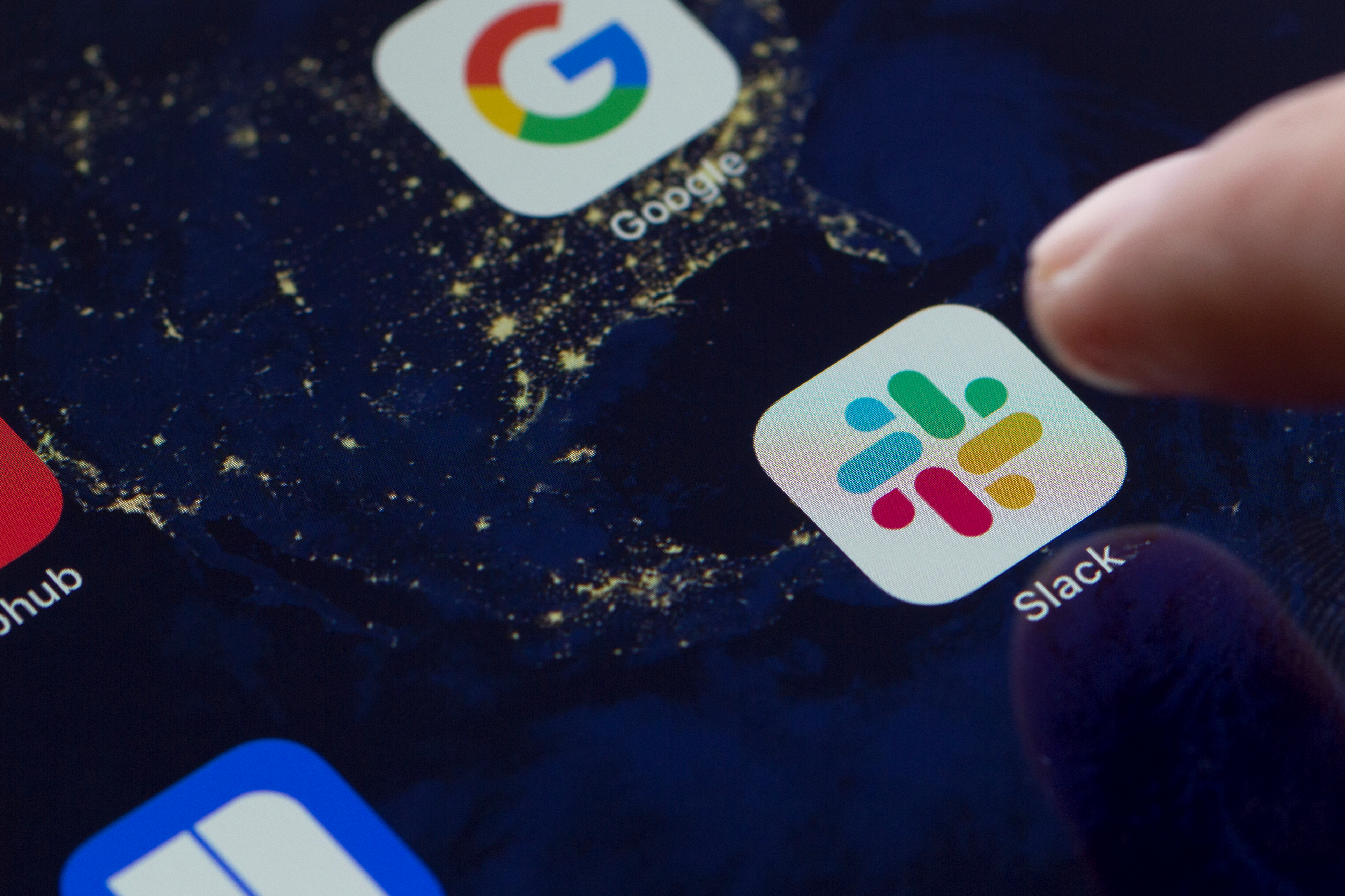-
Provided by

- Date published: Nov 19, 2021
- Categories
As a digital organisation, Wikimedia – the non-profit foundation that operates and supports the internet giant Wikipedia – is no stranger to remote working. With a global workforce of over 600 employees spanning 54 countries and counting, the business has long had a remote-first approach and encouraged virtual connection across borders.
Robyn Arville, Chief Talent and Culture Officer at Wikimedia, believes this way of working encourages employees to connect outside of their location, helping to drive diversity and difference while cultivating an inclusive culture that unites everyone as one organisation.
And while remote working comes with its own set of unique challenges, cultivating an authentically inclusive culture across different geographies is a separate task entirely. Challenges like US-centrism, time zones, work-life balance and language barriers are all natural hurdles to jump as Wikimedia continues its mission to represent a truly global workplace.
Here’s how Wikimedia is deconstructing their organisational model and 8-hour workday to rebuild it more inclusively with everyone in mind.
Combating US-centrism and modelling honesty
As a foundation born in the US, Wikimedia has always placed the US at the decision-making centre of the business and modelled their recruitment approach in much the same way.
But with the strengthening role of technology and Wikimedia’s position as a remote-first business (even pre-pandemic), broadening their talent pool was an obvious starting point to innovate the business and drive its inclusivity agenda forward.
“We started exploring ways to reflect the global intent of Wikimedia and to be ambassadors of the model we want to see in the world” explains Robyn. “And so we did start intentionally recruiting and counterbalancing the US-centricity that we were seeing.”
Teams began hiring more people globally, including Robyn’s Talent and Culture team where she intentionally and purposefully hired non-US HR professionals.
And with great success. Wikimedia now operates with 44 percent of staff based outside of the US across 54 different countries, with efforts to tip the scale to more equity in different geographies continuing.
“It has really brought so many diverse perspectives and really added and elevated so much of our thinking, creativity and innovation” says Robyn.
However, despite the benefits and success of Wikimedia’s shift to a more diverse and global workforce, it’s something that continues to present its own set of challenges.
One key challenge is the tendency to prioritise US time when planning meetings and events, despite a wider ratio of people spread across different countries and time zones.
“There were tensions about having the executive team be US-based versus the non-US hiring we were doing,” says Robyn. “We started seeing meetings that always catered to the Pacific time zone.”
This meant that others were expected to flex heavily to attend meetings on US time, resulting in an uneven share in work-life balance and an inevitable lack of productivity.
To combat this, Robyn and her team worked to leverage HR’s position as an influencer to executive leadership. They partnered with leaders across the business to drive awareness and encourage being cognizant of others globally.
“For our monthly staff meetings we now rotate the time – we can’t always have it on US-centric time,” explains Robyn.
“We also started talking about more asynchronous work – what could be done asynchronously over unnecessary meetings that’s always at a time that’s inconvenient for someone?”
Modelling honesty and transparency is also a big factor in Wikimedia’s approach to inclusivity. After feedback from surveys highlighted that meetings often still catered for the executive team in the US, Wikimedia wanted to remedy this.
“It starts from us as leaders modelling the way of working we want our employees to adopt,” says Robyn. “Leaders need to model that we can be inconvenienced to accommodate others just as much as the other way around.”
As part of Wikimedia’s culture, everyone is encouraged to build out their calendars individually. There is no 9-5 culture and all calendars are transparent for others to see.
“We shouldn’t glorify working all hours of the day just to accommodate different time zones,” explains Robyn. “That doesn’t help us model resilience, recharge and reset.”
Encouraging asynchronous work, presence and flexibility
We’ve all heard of the phrase “this could have been an email”. And while the pandemic has undoubtedly rocketed video adoption to make it easier and faster to communicate with people globally, the increase in expectation and demand is causing challenges for many as they try to get clear on how and why their people meet.
“We are all learning to do more in meetings and to be more mindful of whether a meeting is needed and who needs to be there,” says Robyn. “And on the flip side, we also ask ourselves what meetings do we not need so we can do more asynchronous work.”
Asynchronous work enables employees to collaborate and work to their own schedule, giving people the freedom to respond when they are at their best.
Wikimedia, who as part of reframing the business more inclusively, openly favours asynchronous work in order to drive collaboration and productivity across it’s globally distributed workforce.
“But it also takes training on how to collaborate with each other and understand each other’s intent and language,” says Robyn.
Wikimedia supports technology as a crucial enabler to asynchronous work.
“I think technology should always be in service to our people,” explains Robyn. “Our mission as an organisation speaks to technology for good.”
As such, Wikimedia makes use of various platforms: Slack for communication, Google Suite for collaborative editing and Degreed to centralise staff training. It also provides training to utilise these platforms efficiently, allowing people to work together seamlessly.
“We’ve paid attention to this new way of meeting, of collaborating and of connecting. So all the more, we’ve got to be mindful of how technology can serve us.”
But it’s a tricky balance to get right. Despite the benefits technology brings, relying too heavily on technology over human connection can have detrimental effects to productivity, wellbeing and the business overall.
“As leaders, we need to be mindful of the ways technology can get in the way,” says Robyn, who explains that presence is a huge priority for Wikimedia.

In-person meetings will always trump virtual meetings when driving real connections. Technology has enabled us to multi-task and have various tabs open at once and as a result, it’s sometimes hard to know how much someone is engaged through the screen.
“All the more we’re modelling being present with each other, turning off Slack and instant messaging,” says Robyn. “Being mindful of the presence of leaders and understanding if you’re with me or if you’re not with me in a meeting.”
Working asynchronously can also help cement flexibility into a workplace culture, which is a crucial ingredient to inclusivity. It allows employees to take time to know what is needed from them and work seamlessly together across borders.
Robyn explains that nowadays “it is about the individual, about allowing that sense of flexibility across the organisation.”
Equity training and driving inclusive communication
“As an organisation, we still make plenty of assumptions of how work is done. Many of those who speak English as a second language spend their whole day trying to accommodate us,” explains Robyn.
To remedy language barriers and drive awareness to cultural sensitivities, Wikimedia has focused a lot of effort in equity training and inclusive communication across the business.
“When we ask for emails or explanations, we don’t think about someone having to adapt their way of thinking just so an English speaker will understand their intent.”

To combat this, Robyn and her team are focusing on their campaign of education, equity training, leadership and management training and sharing inclusive communications.
The HR function has created an inclusive communications guide for all of their staff to access, aimed at challenging people to see what they can change with curiosity. Employees and leaders alike are encouraged to speak up and share tips and wins on how they’re achieving inclusivity: “One tip can go a long way in making a change a reality!”
Incremental changes are also valued, such as replacing Pacific Time with UTC and being mindful of date formats globally. It all plays an important role and teaches people to understand the effects of how they choose to communicate.
“We have also done surveys and intentional DE&I-targeted ways of educating folks of some of the cultural sensitivities that they need to be mindful of.”
Now looking forward, Wikimedia is continuing its focus on being a nimble organisation, encouraging their people to emerge with different mindsets and being open and staying curious to learn, thrive and develop.
Starting in January 2022, Wikimedia is implementing sessions with staff to understand, define and refresh their values, with the purpose to push its inclusivity agenda further. By defining a set of behaviours and common coherent language, it will help to bring unity, consistency and clarity in Wikimedia’s collective pursuit to cultivate a thriving inclusive and resilient organisation.

Robyn is currently the Chief Talent and Culture Officer at the Wikimedia Foundation. She is responsible for developing Wikimedia’s talent strategy and guides the organisation to create a culture that embraces innovation, learning, resilience and joy.
Robyn has more than 20 years of human resources experience; some of her areas of expertise include organisational design and effectiveness, workforce planning, talent development, performance facilitation, compensation and benefits, and employee engagement and well-being.

